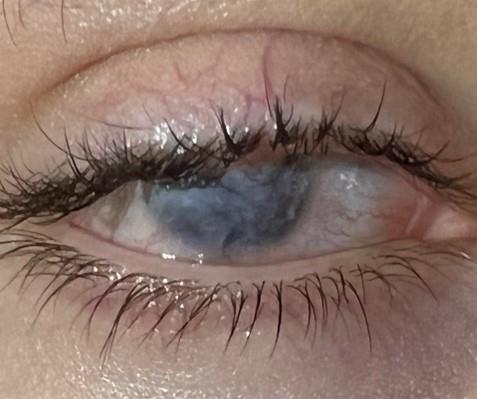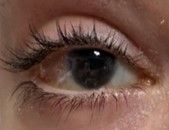Article
ARVO 2023: Krystal Biotech announces clinical data on topical application of B-VEC to treat ocular complications in patient with dystrophic epidermolysis bullosa
Author(s):
Under a compassionate use program, the topical application of B-VEC to the eye was well tolerated and patient showed significant improvement of visual acuity and complete corneal re-epithelization. The company presented data at the Association for Research in Vision and Ophthalmology annual meeting in New Orleans.
(Image Credit: AdobeStock)

Krystal Biotech Inc. announced new data on the compassionate use of topical beremagene geperpavec (B-VEC) to treat a patient with dystrophic epidermolysis bullosa (DEB) with recurrent cicatrizing conjunctivitis.
The company presented the data at the Association for Research in Vision and Ophthalmology (ARVO) 2023 Annual Meeting in New Orleans.
“DEB is a devastating disease with limited treatment options, and there is a substantial population of DEB patients with ocular complications for which treatment options are limited and often include surgery,” said Alfonso L. Sabater, MD, PhD, assistant professor of Clinical Ophthalmology at the Bascom Palmer Eye Institute at the University of Miami Miller School of Medicine. “It is exciting to potentially advance a topical treatment for patients with ocular complications associated with DEB.”
This image shows a slit lamp photo of the right eye.Baseline ankyloblepharon. The visual acuity was hand motion (HM). (Images courtesy of Krystal Biotech Inc.)

According to the company, the data presented describes the first application of B-VEC to treat ocular complications in a patient with DEB under a compassionate use program. The patient presented with cicatrizing conjunctivitis and underwent surgical symblepharon lysis with pannus removal in the right eye. B-VEC was administered to the patient’s right eye at regular intervals following surgery in addition to routine post-surgical management.
B-VEC is an investigational non-invasive, topical, redosable gene therapy designed to deliver two copies of the COL7A1 gene when applied directly to DEB wounds. B-VEC was designed to treat DEB at the molecular level by providing the patient’s skin cells the template to make normal COL7 protein, thereby addressing the fundamental disease-causing mechanism.
The FDA and EMA have each granted B-VEC orphan drug designation for the treatment of DEB, and the FDA has granted B-VEC fast track designation and rare pediatric designation for the treatment of DEB. In addition, the FDA granted Regenerative Medicine Advanced Therapy (RMAT) to B-VEC for the treatment of DEB and the EMA granted PRIority MEdicines (PRIME) eligibility for B-VEC to treat DEB.
The company noted that B-VEC was well tolerated and associated with full corneal healing by 3 months as well as significant visual acuity improvement from hand motion to 20/40 at 7 months, the latest time point of the on-going treatment effect evaluation.
No drug-related adverse events (AE) have been observed. Two non drug related, serious AEs were reported:
- Prolonged hospitalization due to complications post-gastrointestinal surgery.
- Prolonged hospitalization due to complications post-esophageal dilation. B-VEC treatment was not interrupted during either event.
Ocular complications are common in patients with DEB, with over half of the patients diagnosed with recessive DEB potentially affected. Typical ocular manifestations include corneal abrasion, as well as corneal scarring, pannus, eyelid ectropions and blisters.1,2 There are no specific FDA-approved treatment options for ocular manifestations of DEB.3
“Ocular complications impose a heavy burden on DEB patients. Based on this promising initial data, we plan to engage with regulatory authorities and explore how we can expand the utility of B-VEC to address this urgent need,” said Suma Krishnan, president of Research & Development at Krystal Biotech. “We are also excited about the implications for our platform as this clinical data, together with ongoing preclinical studies evaluating intravitreal and subretinal routes of delivery to the eye, suggests significant potential to treat multiple ocular diseases with few or no treatment options.”
Figure 2 A slit lamp image of the ocular surface of the right eye 6 months after the surgery after B-VEC applications. (Images courtesy of Krystal Biotech Inc.)

DEB is a rare and severe disease that affects the skin and mucosal tissues. It is caused by one or more mutations in a gene called COL7A1, which is responsible for the production of the protein type VII collagen (COL7) that forms anchoring fibrils that bind the dermis (inner layer of the skin) to the epidermis (outer layer of the skin). The lack of functional anchoring fibrils in DEB patients leads to extremely fragile skin that blisters and tears from minor friction or trauma. DEB patients suffer from open wounds, which leads to skin infections, fibrosis which can cause fusion of fingers and toes, and ultimately an increased risk of developing an aggressive form of squamous cell carcinoma which, in severe cases, can be fatal.
References:
1. Tang JY, Marinkovich MP, Lucas E, et al. A systematic literature review of the disease burden in patients with recessive dystrophic epidermolysis bullosa. Orphanet J Rare Dis. 2021 Apr 13; 16(1): 175. doi: 10.1186/s13023-021-01811-7.
2. Tong L, Hodgkins PR, Denyer J, et al. The eye in epidermolysis bullosa. Br J Ophthalmol. 1999 Mar; 83(3): 323-6. doi:10.1136/bjo.83.3.323.
3. Chen VM, Mehta N, Robbins CC, et al. Anterior-segment spectral domain optical coherence tomography in epidermolysis bullosa. Ocul Surf. 2020 Oct; 18(4): 912-919. doi: 10.1016/j.jtos.2020.08.010
Newsletter
Don’t miss out—get Ophthalmology Times updates on the latest clinical advancements and expert interviews, straight to your inbox.




